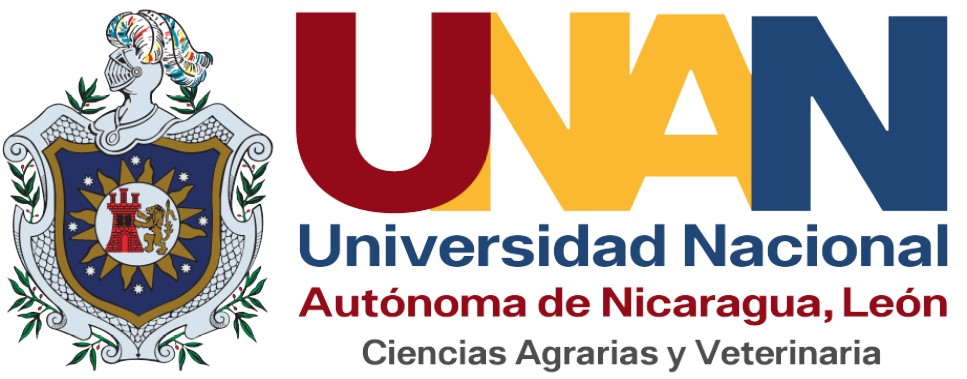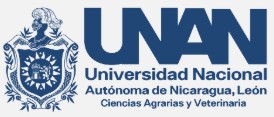Bio economía en la encrucijada del desarrollo sostenible
DOI:
https://doi.org/10.5377/ribcc.v4i7.5952Palabras clave:
Bio-economia, Economia verde, Conocimiento economia biobasada, Desarrollo sustentable, Elección de estrategiasResumen
Este estudio tiene como objetivo revisar, analizar y sistematizar el conocimiento creado sobre la bioeconomía para desarrollar un marco conceptual y teórico basado en el estudio transdisciplinario de la biología y la socioeconomía para ser utilizado en futuras investigaciones. Comienza desde el cuestionamiento de cuáles son los beneficios que la bioeconomía tiene en comparación con la economía neoclásica. Los métodos empleados son analíticos críticos, descriptivos, deductivos-inductivos y sugieren enfoques holísticos y transdisciplinarios. Como resultado, el núcleo del estudio presenta los principios bajo los cuales este nuevo paradigma científico en el desarrollo sostenible puede continuar creando más conocimiento científico para ser utilizado en la formulación e implementación de elecciones estratégicas para el proceso de bioproducción, biodistribución y bioconsumo.
Descargas
Métricas
Citas
Armstrong, C.W. and Sumaila, U. R. (2000). Cannibalism and the optimal sharing of theNorth-EastAtlantic cod stock: a bio-economic model. Journal of Bio-economics, vol. 2, no. 2, pp. 99–115, 2000.
Birch, K. (2015). York University. (2015). Toronto, ON, Canada. Phone interview and email correspondence. Personal communication, 7 January 2015.
Birch, K. Levidow, L. y Papaioannou, T. (2010). Sustainable Capital? The Neoliberalization of Nature and Knowledge in the European Knowledge-based Bio-economy. Sustainability. 2, 2898-2918.
Birch, K.; Tyfield, D. (2012). Theorizing the Bio-economy: Biovalue, Biocapital, Bio-economics or What? Sci. Technol. Hum. Values 2012, 38, 299–327.
BioPro Baden-Wuerttenberg (2014). Bio-economy: Baden-Württemberg Path towards a Sustainable Future. Available online: http://www.biopro.de/biopro/downloads/index.html?lang=en (accessed on 27March 2014).
Brundtland Gro Harlem. (1987). Our Common Future, Oxford University Press.
Carrez, D. (2014). Clever Consult, Brussels, Belgium. Phone interview and email correspondance. Personal communication, 9 April 2014.
Clark C. W. (2010). Mathematical Bio-economics: The Mathematics of Conservation, 3rd Edition. Wiley. May 2010.
Clark, C. W. (1995). Modelling and Fisheries Management, John Wiley and Sons, 1985.
Club de Rome (1972). Halte à la croissance ?- traduction française Fayard.
de Besi, M. and McCormick, K. (2017). Towards a Bio-economy in Europe: National, Regional and Industrial Strategies International Institute for Industrial Environmental Economics (IIIEE), Lund University.
ETC Group (2015). The Bio-economy. http://etcgroup.org/issues/bio-economy
European Commission (2015). Bio-economy Strategy. http:// ec.europa.eu/research/bio-economy/policy/strategy_en.htm.
European Commission (2015). Bio-economy Strategy. Available from: http://ec.europa.eu/research/bio-economy/policy/strategy_en.htm.
European Commission. (2012). Innovation for Sustainable Growth: A Bio-economy for Europe. Available from: http://ec.europa.eu/research/ bio-economy/index.cfm?pg=policy&lib=strategy
European Commission. (2012). Innovating for Sustainable Growth: A Bio-economy for Europe; Publication Office of the European Office: Luxembourg, 2012.
European Commission. (2012). Innovation for Sustainable Growth: A Bio-economy for Europe. Available from: http://ec.europa.eu/research/ bio-economy/index.cfm?pg=policy&lib=strategy European Bio-economy Panel and SCAR (2014). What Next for the European Bio-economy? Available from: http://ec.europa.eu/research/bio-economy/pdf/where-next-for-european-bio-economy-report-0809102014_en.pdf.
European Bio-economy Panel and SCAR (2014). What Next for the European Bio-economy? Available from: http://ec.europa.eu/research/bio-economy/pdf/ where-next-for-european-bio-economy-report-0809102014_en.pdf.
Fumagalli, A. (2007) Bioeconomia e capitalismo cognitivo: Verso un nuovo paradigma di accumulazione. Roma: Carocci.
FORMAS. (2012). Swedish Research and Innovation Strategy for a Bio-Based Economy; The Swedish Research Council for Environment, Agricultural Sciences and Spatial Planning (FORMAS): Stockholm, Sweden, 2012.
Franco, J., Goldfarb, L., Fig, D., Levidow, L. y Oreszczyn, S.M. (2011). Agricultural Innovation: Sustaining What Agriculture? For What European Bio-Economy? Project-wide final report. CREPE.
Georgescu-Roegen, N. (1977). "Inequality, Limits and Growth from a Bio-economic Viewpoint," Review of Social Economy XXXV, 3: 361-375.
Hall, R. and Zacune, J. (2012). Bio-economies: The EU's real 'Green Economy' agenda? World Development Movement and the Transnational Institute.
Henry M, Roche M. (2013). Valuing lively materialities: Bio-economic assembling in the making of new meat futures New Zealand. Geographer 69: 197-207.
Knowler, D. A. (2002). Review of selected bio-economic models with environmental influences in fisherie., J Bioecon. 4(2), 163-181, 2002.
Levidow, L., K. Birch and T. Papaioannou (2012). EU agri-innovation policy: Two contending visions of the bio-economy'. Critical Policy Studies. 6(1), 40-65.
Mayumi, K. (2001). The Origins of Ecological Economics.The bio-economics of Georgescu-Roegen Routledge Research in Environmental Economics. London and New York. Routledge.
McCormick, K.; Kautto, N. (2013). The Bio-economy in Europe: An Overview. Sustainability. 5, 2589–2608. https://doi.org/10.3390/su5062589
Mohammadian, M. (2000). Bio-economics: Biological Economics. Interdisciplinary Study of Biology, Economics and Education. Entrelíneas Editores. Madrid.
OECD. (2009). The Bio-economy to 2030: Designing a Policy Agenda. http://www.oecd.org/futures/bio-economy/2030.
Patermann, C. (2014). Member of the Bio-economy Council, Germany. Phone interview and email correspondence. Personal communication, 24 March 2014.
Pfau, S.; Hagens, J.; Dankbaar, B.; Smits, A. (2014). Visions of Sustainability in Bio-economy Research. Sustainability 2014, 6, 1222–1249. https://doi.org/10.3390/su6031222
Piotrowski, S.; Carus, M.; Essel, R. (2015). Global bio-economy in the conflict between biomass supply and demand. Nova Pap. 2015, 7, 1–14.
PNUM (Programa de las Naciones Unidas para el Medio Ambiente. (2016). Hacia una economía verde: Guía para el desarrollo sostenible y la erradicación de la pobreza. 21 de noviembre de 2016, de Programa de las Naciones Unidas para el Medio Ambiente Sitio web: http://www.pnuma.org/eficienciarecursos/economia.php
Schmidt, O.; Padel, S.; Levidow, L. (2012). The bio-economy concept and knowledge base in a public goods and farmer perspective. Bio-Based Appl. Econ. 2012, 1, 47–63.
Soedigdo D, Harysakti A, Usop TB. (2014). The elements driving local wisdom on the architecture Nusantara. J Perpect Archit 9 (1): 37-47.
Socaciu, C. (2014). Bio-economy and green economy: European strategies, action plans and impact on life quality, Bulletin UASVM Food Science and Technology, 71(1).
USDA (2015). An Economic Impact Analysis of the U.S. Biobased Products Industry - A Report to the Congress of the United States of America, USDA 2015.
Welfe, A.; Gilbert, P.; Thornley, P. (2014). Increasing biomass resource availability through supply chain analysis. Biomass Bioenergy 2014, 70, 249–266. https://doi.org/10.1016/j.biombioe.2014.08.001
Publicado
Cómo citar
Licencia
Derechos de autor 2018 Revista Iberoamericana de Bioeconomía y Cambio Climático

Esta obra está bajo una licencia internacional Creative Commons Atribución-NoComercial-CompartirIgual 4.0.
Copyright © 2025 Rev. iberoam. bioecon. cambio clim. Universidad Nacional Autónoma de Nicaragua León (UNAN-León), Area de Conocimiento de Ciencias Agrarias y Veterinarias/ Area Especifica de Agroecología y agronegocios /Centro de Investigación Ciencias Agrarias y Veterinarias. Dirección Académica. Departamento de Investigaçión. Unidad de publicaciones y eventos cientificos.












 EDITORIAL
EDITORIAL  e-ISSN
e-ISSN


 COPYRIGHT
COPYRIGHT  Este trabajo está licenciado bajo una Licencia Internacional
Este trabajo está licenciado bajo una Licencia Internacional 












